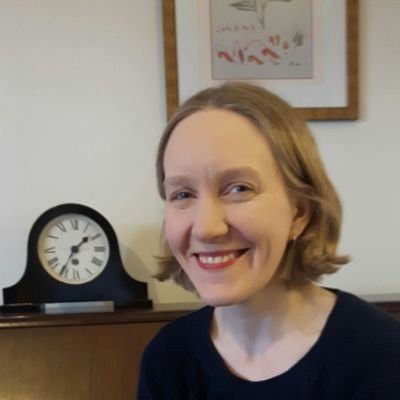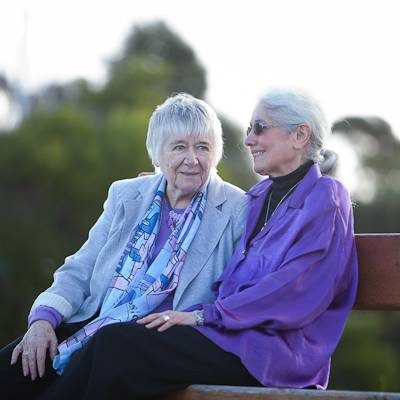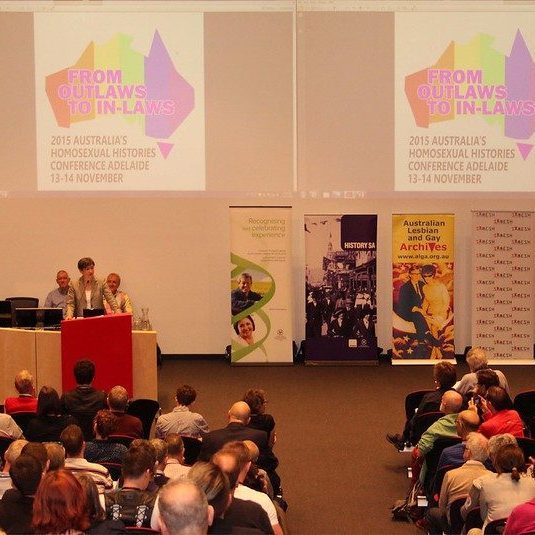
Dr Rebecca Jennings shares her work on how ‘lesbian histories of intimacy’ have developed in Australia over the past several decades.
As queer women, how we live our intimate lives is enormously varied. We are a broad group of people; not to mention the fact that we navigate multiple forms of oppression on a daily basis. Diversity has always been our story, and LGBT history is rich.
Women throughout queer history have come up against evolving challenges and priorities in practising their queer partnerships, whether they be with life partners, one-night stands, or the other parent/s to their children.
Dr Rebecca Jennings has dedicated many years of academic work to what she calls “lesbian histories of intimacy” in Australia. Her research spans the historical period from post-war 1945 to almost the present day and is based on oral history interviews she conducted with women from the ages of 18 to 90, as well as archival documents from this period.
Dr Jennings explains the main interest of her work as the varying relationship dynamics between women over time. “I am interested in the way that women have structured their relationships – whether they’ve thought about them in terms of long-term relationships or one night stands, and whether they want them to be monogamous or non-monogamous – and ideas about marriage… and whether there have been dominant models for these relationships over time,” she explains. “So, ideas about butch/femme were the main way women were thinking about their relationships in, say, the ‘50s; then non-monogamy took over in the ‘70s with feminism.”
‘Histories of intimacy,’ for Dr Jennings, also includes how women’s experiences of lesbian parenting have changed. Dr Jennings says, from her research, she sees that a shift occurred between the post-war period when women “typically conceived children in the context of a heterosexual relationship and subsequently formed a lesbian relationship” to the late ‘70s and early ‘80s when many women started to “think about conceiving children within the context of a lesbian relationship.”
Dr Jennings says that she came across several surprising findings in her research, one of which is that ‘coming out’ has seemed to be less significant in many queer women’s lives than is generally thought. “The idea that from the ‘70s onwards, coming out was the dominant way of thinking about your identity as a lesbian is really not true. I think for a small group of people who were really involved in feminist or lesbian and gay activism, in city centres in the ‘70s, then coming out was a really important ideology… But beyond that small group of people, I think women not in urban areas and not involved in politics have not come out to the extent that it is assumed that they have.”
“I think up to the present, there are a still a lot of people that aren’t being really visible about their sexuality, for various reasons. It might have to do with work or family attitudes, or that they just don’t feel culturally comfortable about it.”
Dr Jennings was also surprised by the fact that, as women became more likely to conceive children as lesbian partners, their parenting roles remained relatively traditional. “I had assumed that [women] would come up with different ideas about their roles as mothers. But, actually, the majority of women that I spoke to who had children as part of a lesbian couple throughout the ‘80s, ‘90s, 2000s, nearly all followed a conventional breadwinner versus primary caregiver model.”

And many younger queer women today might be sticking to more ‘conventional’ relationship models, too, according to Dr Jennings. She says that she expected a greater desire for casual and polyamorous relationships among younger women, but actually, that wasn’t the case in her study.
“I had the assumption that people wouldn’t want to put an identity on themselves… but most of the women that I interviewed were looking for a stable, long-term relationship with one other woman. They mostly did identify as ‘lesbian’. Marriage was very much something that women these days were thinking about a lot more than older women were.”
Now, Dr Jennings says, women also tend to meet each other through more casual, and – surprise! – digital means than in the past. “Whereas in the ‘70s, ‘80s, ‘90s, you’d be looking to meet women in bars or social groups, or through making social contacts, physically; nowadays it’s more through online dating that women are meeting each other, or through entirely non-gay venues like work or mixed social groups. There seems to be less emphasis on the importance of lesbian spaces and lesbian social networks.”
Sexuality as a part of identity seems to have also become more normalised, according to Dr Jennings’ findings. “I think people are thinking more in terms of sexuality just being another aspect of their lives, alongside their work and their family and that kind of thing.”
In light of the many struggles that queer women still face, Dr Jennings emphasises the importance of talking and sharing stories as a means of helping ourselves and each other through hard times.
“I think issues like mental health problems and dependence on alcohol and drugs are still a big problem for the lesbian community, and young lesbians,” she says. “On some level, we can say it’s easier to be a lesbian now than it was 50 years ago, but at the same time, the evidence seems to show that young lesbians are still struggling with their sexuality to the same degree that women were in the ‘60s and ‘70s. I think a lot of that is to do with the fact that we still haven’t talked about it that much.”
Dr Rebecca Jennings has written academic articles on lesbian histories of intimacy in Australia and will publish her completed research in a book and website.



